Click here to view Knocknagow (1918)
Global integration was greatly accelerated during the second half of the nineteenth century by the development of new communication techniques. There was a steady progression towards the abolition of spatial and temporal restrictions as it became possible to transport, first, people, then their messages, and, finally, their voices. By the 1920s, communications had extended from postal services based on horse-drawn transport to telegraphy, telephone and, radio. Contemporaries of these developments must have had a strong if ambivalent sense that a shared cultural realm was now emerging. With the transition from sharing events and impressions with one’s nearest neighbours, to the possibility of sharing thoughts and feelings mediated by telegrams, telephone conversations, and national radio programmes, something momentous was clearly under way.
New communication technologies are typically seen as systemic, that is, as dependent for their function on more than just technology. For new technology to reach its full potential, it must grow in tandem with numerous organisational, political, social, and cultural developments. As what Sara Danius has called “translations of the elusive yet structured social, institutional, and economic relations that partake in their constitution” (Danius, 43), new technologies generate cultural uncertainty even as they seem to alter the very prerequisites of social organization. At the same time, these centrifugal forces stimulated an impulse towards cultural preservation. Even as new communication links promised to abolish the traditional antagonism between city and countryside, centre and periphery, civilisation and nature, open-air folk museums such as Skansen in Stockholm (est. 1891) promised to preserve society’s knowledge of its own past and make the natural world available to be measured in all its details (Björkin, 37; Kylhammar, 134–5).
Early film is often discussed in relation to these new technologies and the urban experience of which they were a product. In hindsight, this habit can make films of the 1910s appear somewhat ambivalent since they are broadly welcoming of modern life at the same time as they exhibit reluctance to abandon rapidly disappearing traditional values (Qvist, 22). Such ambivalence, coupled with their link to a common cultural heritage, made the new communication technologies, among them film, an ideal vehicle for propaganda purposes. Indeed, according to a booklet issued by the production company Svenska Biografteatern in order to publicize Sången om den eldröda blomman (The Song of the Scarlet Flower) (Sweden 1919, dir. Mauritz Stiller), film is the best possible instrument of propaganda (Svensk film, 3–4). The booklet, whose full title is Svensk film i utlandet: några ord om exportmöjligheterna för vår filmindustri och om en svensk filmsuccès i London (“Swedish Film Overseas: Some Words on Export Opportunities for Our Film Industry and a Swedish Film Success in London”) (see fig. 1) , argues that cinema was an important factor in fostering an atmosphere of patriotism during the First World War, and claims that the visuality of film enables it to speak to viewers far more directly than media such as newspapers, whose readers can always choose to skim the headlines.
Knocknagow (1918) provides suggestive illustration of the precepts offered by this obscure booklet. From its opening intertitle, “Produced by the Film Company of Ireland in Ireland by Irish Men and Women”, the film’s contribution to Irish propaganda for an independent state follows the practices current in other national cinemas of the time. As recommended by the authors of Svensk film i utlandet, Knocknagow used local talent and situated its production in the country being represented. In turn, the film’s limited criticisms of British rule should be seen in the light of efforts to establish an Irish film industry at a time when the country’s newspaper press was severely restricted by the Defence of the Realm Act of 1914, which had been further tightened after the 1916 Easter Rising (Kenneally, 5).The anonymous author of Svensk film i utlandet contends that film, thanks to its universal language, can drive the message home “expressively, clearly, and plainly” (Svensk film, 4) like no other medium. Interestingly, the booklet differentiates between two types of propaganda films: those, like war propaganda films, which openly argue their case; and those which use the depiction of particular conditions to direct the way their audiences, consciously or unconsciously, read them. Finally, the booklet emphasises that films are a kind of first-hand testimony about their country of production, and quotes a review of The Song of the Scarlet Flower in the Daily Mail of London which argued that if filmmakers wishing to depict life in a country authentically should use local talent and situate their production in that country (Svensk film, 11)—a perspective echoed by a near-contemporary article in the Irish Independent calling for Irish educational films (7 February 1920, 3).
In Knocknagow, the abolition of time and space by new communication technologies is subtly used for the purposes of propaganda. The film takes place in the mid-nineteenth century, when messages and information circulated slowly around a messaging system that left senders continually uncertain as to whether delivery had actually occurred. This factor is a central underpinning of the narrative strand in which a note from Arthur O’Donovan to Mary Kearney fails to be delivered on time and thereby leads him to believe that she has rejected his advances. The film was produced in 1918, of course, by which point technological advances had made it far more certain that messages would reach its recipient—and more quickly.
The setting of the story in Knocknagow in 1848 and the production of the film in 1918 are divided by 70 years. Yet both texts are linked by the songs and poems which the film uses to establish a feeling of a shared Irish cultural heritage. In what follows, I will examine how the film adaptation of Knocknagow uses poems and song to connect viewers in 1918 with the period in which the story is set. My discussion is divided into three parts. My analysis begins by focusing on the poems cited in the film and what can be thought of as the film’s “implied sound”. Drawing on Rick Altman’s notion of “cinema as event” as a theoretical tool, particularly his views on the relationship between the work of production and the process of reception, I then proceed to consider the ways in which the film presents traditional songs in order to connect historical periods that are considerably removed. The article concludes with a discussion of how the musical accompaniment to the film additionally serves to connect the past of the film’s story and the present of its production.
Poems and implied sound
Knocknagow opens with a series of intertitles (Intertitles 5–7) which reproduce the lines of the fourth stanza of “The Men of Tipperary” (1842) by Thomas Osborne Davis (1814–45):
Let Britain boast her British hosts,
About them all right little care we;
Not British seas nor British coasts
Can match the man of Tipperary!
Tall is his form, his heart is warm,
His spirit light as any fairy,—
His wrath is fearful as the storm
That sweeps the hills of Tipperary!
Lead him to fight for native land.
His is no courage cold and wary;
The troops live not on earth would stand
The headlong charge of Tipperary!
Yet meet him in his cabin rude,
Or dancing with his dark-haired Mary,
You’d swear they knew no other mood
But mirth and love in Tipperary!
You’re free to share his scanty meal.
His plighted word he’ll never vary,—
In vain they tried with gold and steel
To shake the faith of Tipperary!
Soft is his cailin’s sunny eye,
Her mien is mild, her step is airy,
Her heart is fond, her soul is high,—
O, she’s the pride of Tipperary!
Let Britain brag her motley rag;
We’ll lift the green more proud and airy; —
Be mine the lot to bear that flag,
And head the men of Tipperary!
Though Britain boasts her British hosts,
About them all right little care we,—
Give us, to guard our native coasts,
The matchless men of Tipperary!
Davis had been the main organiser of the Young Ireland movement, a group which had agitated for political, cultural, and social change in mid-nineteenth-century Ireland. These were years in which Ireland was racked by a series of famines, swelling Irish emigration, primarily to North America, and prompting a groundswell of opposition to British rule (see Miller, 281–2), and Davis’s commentary upon these circumstances, notably the rhyming of the Irishman’s “scanty meal” with Britain’s “gold and steel”, is not hard to detect. Davis died in 1845 but the Young Ireland group continued and on 29 July 1848 launched an armed uprising in Ballingarry, Country Tipperary, just a few miles from the home of Knocknagow’s author Charles Kickham. Although the ill-fated Young Ireland Rebellion, as Kerby A. Miller notes, “ended quickly and ingloriously in a Tipperary cabbage patch” after a day-long firefight with local police (Miller, 280), its importance as a source of inspiration to later Irish nationalists was incalculable.
Unlike the novel from which it was adapted, the film version of Knocknagow takes pains to date the action—twice—to Ireland’s year of revolution:
We turn back the pages of time to the Ireland of “48” when Irish smiles broke through every cloud of oppression. (Intertitle 3)
This story, in a series of episodes, depicts the joys and sorrows of the simple kindly folk who lived in the homes of Tipperary seventy years ago. (Intertitle 4)
Taking up the theme of Davis’s poem, the film emphasizes the parallels between the revolutionary spirit of 1848 and that of the present, including recent epochal events such as the abortive Easter Rising of 1916 that had galvanized popular support for Irish independence (Duffy, 116, 128). Indeed, the repetition of the stanza in an additional intertitle (Intertitle 8 ) suggests that the quotation from “The Men of Tipperary”, rather than simply echoing the epigraph to the novel, stands as a coda to the politics of Knocknagow the film in 1918. For Irish audiences who would have known Davis’s famous poem by heart, especially its call to “lift the green more proud and airy”, the message could not have been clearer: in all ages Ireland’s revolutionary struggle has been led by “the men of Tipperary”. In so doing, this all-Irish film adaptation of a novel written by an Irish nationalist and set in the year of the Young Ireland Rebellion would seem to offer itself as a cinematic counterpart to Ireland’s political rebirth.
A useful point of comparison in this respect is the Swedish film The Song of the Scarlet Flower, which also uses poetry and songs to establish its setting. Like Knocknagow, it is an adaptation of a book— Johannes Linnankoski’s Laulu tulipunaisesta kukasta (1905), translated from Finnish into Swedish in 1906—whose action takes place during an earlier period in the history of the “nation”. The theme of the book and the subsequent film with its original music score composed by Armas Järnefelt (then conductor at the Royal Opera in Stockholm) was however seen as Swedish, or at least Scandinavian (Wallengren, 212–13, 16– 17). An opening intertitle reproduces several lines from a song in Linnankoski’s book (fig. 2) :
Hjortronblomma,“Smultronblomma,
Kom kossorna,
Det är kväll!!
(Wild strawberry flower,
Cloudberry flower,
Come, cows,
It is evening!)
Indeed, the entire first act of Mauritz Stiller’s adaptation recurrently uses song lyrics to set the film’s tone and atmosphere (see fig. 3) , a mood which the Stockholm daily Dagens Nyheter described as: “Over [the] scenes in the beginning hangs all the enchantment of a Nordic summer: the meeting with Annikki in the forest, and games in the meadow; thereby sharpening the contours . . . of the scenes in the city with relentless and harrowing realism” (15 April 1919, 8).
Although Knocknagow and The Song of the Scarlet Flower both establish their theme by means of poems and songs, there is a significant difference in their use of intertitles. Where The Song of the Scarlet Flower follows a Swedish tradition of unadorned printed intertitles (see fig. 4) , Knocknagow features more elaborately artistic designs in order to enhance the atmosphere of rural Ireland evoked by the songs and poems (see Appendix H). As Sofia Bull has shown in her research into typographer Alva Lundin’s work for the Svensk Filmindustri production company, notably for Herr Arnes pengar (Sir Arne’s Treasure) (Sweden 1919, dir. Mauritz Stiller), Sweden appears to have seen a development away from printed intertitles towards handwritten ones (arguably the predecessors of more elaborate art-titles) during the years 1919–20 (Bull, 117) (see fig. 5) —somewhat later than in Hollywood, where, as Barry Salt has shown, more ornate intertitles came into use around 1916 (Salt, 108) (see fig. 6 and fig. 7 ).
In the 1910s, intertitles incorporating popular poems and songs into a film’s narrative, or into the diegetic world of the film itself, were widely used as a way of actively engaging audiences in what Rick Altman calls “the cinematic event”. The cinematic event, according to Altman, describes a way of thinking about the film medium as a structure around which everything concerned with that particular filmic text revolves. Two aspects are of particular importance: the work of production and the process of reception. The key to understanding the model, argues Altman, is the insight that, just as film production operates through the text and influences its reception, so, too, does the film’s reception, operating in reverse, influence the production. No one side is privileged; instead, there is a continuous interchange between the two, without beginning or end, and a constant shifting of positions (Altman, 1992, 2–4).
In this sense, Knocknagow can be thought of as a contact space between the narrative content and its audience, one that gave the makers of the film an opportunity to control (to some extent) the film’s reception and how it was read. For instance, as already noted, Knocknagow opens with Davis’s well-known poem “The Men of Tipperary”, thereby instantly directing audiences to connect the film with a certain time-frame of the mid nineteenth-century as well as with nationalist Irish discourse of the 1910s. Recall the poem’s third and fifth verses:
Lead him to fight for native land.
His is no courage cold and wary;
The troops live not on earth would stand
The headlong charge of Tipperary!
. . .
You’re free to share his scanty meal.
His plighted word he’ll never vary,—
In vain they tried with gold and steel
To shake the faith of Tipperary!
The fact that Knocknagow was intended for audiences well versed in Irish song and poetry illustrates Altman’s point nicely.
Sound cues within a film and sound sources outside of a film both play an important role in Altman’s account of the cinematic event by virtue of maintaining the connection between film and the audience. In the case of sound cues within a film, the sequence in Knocknagow involving the caged bird provides a good example of the way that film from an early stage was filled with intradiegetic sounds (see Perron, 79). In the protracted scene in which Nora Lahy dies, a linnet or house finch jumping around in its cage is prominently visible behind her bed, around which family and friends are gathered. As the eyes of the dying girl fall, an intertitle explains: “Nora Lahy hears a call and the linnet that never sang before, sends forth its thrilling notes” (Intertitle 141). The mourners turn towards the cage and gaze at the linnet (fig. 8 ) before turning back to Nora. The next intertitle reads: “As the song of the linnet ceased, Nora Lahey [sic] was among her kindred angels” (Intertitle 142). The “sounds” of the bird have here become diegetic, much the same way as when the huntsman blows his horn during the hare-coursing scene to announced the end of the hunt (fig. 9) .
These auditory cues—a feature of Knocknagow’s many scenes, such as the wedding dance, that explicitly rely on some kind of diegetic musical accompaniment—create in the viewer a visual sensation of experiencing a unified medium. The phenomenon can be seen in the sequence in which Mat, playing the famous Knocknagow drum, leads the village band through the streets (Clip 1). In having the camera hold on Mat for a second before he strikes the drum for the first time, the filmmakers effectively provided the musicians accompanying the film a signal that would allow them to simulate the sound of the drumbeat in the theatre. This sensation would have been powerfully enhanced during the numerous screenings of Knocknagow which were accompanied by live music, usually pre-existing popular melodies, and commentary by actors from the film specially engaged for this purpose.[1] It would, moreover, have been natural for cinema musicians familiar with the book on which Knocknagow was based to use the famous Tipperary song “Slievenamon” which had also been written by Charles Kickham; the song was incorporated into a theatrical version of Knocknagow that was touring Ireland at the same time as the film was being screened.
Traditional songs
If new communication links were felt to have abolished the traditional antagonism between city and countryside, Altman’s notion, in emphasising continuous interaction, also illustrates how different technologies can overlap with each other. As already noted, new technology creates an uncertainty and ambivalence towards that very same technology, facilitating modern life even as it gives rise to a longing for the past. Yet this all seems to be missing in Knocknagow, whose songs and poems create a different discursive dichotomy between city and countryside.
Following the opening intertitles and a majestic panorama of Tipperary’s Golden Vale, a stationary camera on a village street records various well-dressed protagonists walking to church in the sunshine, at which point the film cuts to Mat Donovan ploughing a field against the backdrop of Slievenamon mountain. An intertitle with two bars of musical notation () then announces “To reap and plow and sow and mow, / And be a farmer’s boy” (Intertitle 11)—the refrain of “The Farmer’s Boy”, a popular nineteenth-century folk song—before cutting back to Mat, who smilingly looks to camera while singing the words “to be a farmer’s boy” (Clip 2).[2]
Although this sequence, with its sentimental celebration of the pastoral, sequence could be read as echoing the many films of this period which portray city life and the countryside as firmly opposed, Denis Condon has suggested that it offers a good example of “how FCOI intended to avoid the stereotypical tourist views of Irish landscape” (Condon, 118). Unlike Corner in Wheat (USA 1909, dir. D. W. Griffith), for example, and connection between the silent sowers and the townspeople in Knocknagow is not a discursive split between city and countryside. The people of this village and the ploughman are of the same kin, and the opposition is rather one of countryside versus a generalized “elsewhere” represented by British rule.
A Corner in Wheat illustrates how society’s link to its fast-disappearing past was often set in a utopian light by films of this period. Although Knocknagow offers a different view of the countryside-urban modernity dichotomy, its poems and songs form express a similar utopianism. In its reliance upon songs and poems as a historical bridge—“We ask you to ramble with us through the summer days of long ago” (Intertitle 3)—Knocknagow holds up a romanticized ideal of collective Irish identity based primarily on culture, rather than class or party allegiance. As Carol Flinn has noted with regard to the use of music in the United States at this time, it was widely believed that such collective cultural identity was best achieved by the expulsion of foreign influences (Flinn, 22), and this sentiment is also present in Knocknagow’s portrait of the people of Tipperary, united across the ages by their songs and poems, standing up to their British oppressors.
Two predictions can thus be advanced in relation to the emergence, or perceived emergence, of a new political landscape. The first, Henrik Gustafsson has argued, is that the new landscape argues that “transpires in the light of our expectations and previous encounters, or . . . evolves from a change of mind and from an altered relationship between self, society and environment” (Gustafsson, 1). The second is that “changes wrought on a landscape are not the same as changes wrought on the land, but on ways of perceiving, representing and communicating an experience of land” (Gustafsson, 1). One important means of communicating this new landscape is the melodies, songs, and poems which new technologies such as film are able to mediate.
Knocknagow articulates this possibility on numerous occasions, from the national melodies used to invoke shared experience of land and suffering, to unifying musical performances such as the famous Knocknagow drum that “ushers in Christmas morning” (Intertitle 23). The film’s inclusion of “The Airy Bachelor,” a traditional Irish song sung by the sympathetic but hopelessly alcoholic Phil Lahy, offers yet another example.[3] As Phil sings, an intertitle supplies lines from the first verse, “Come all you airy bachelors, / A warning take by me” (Intertitle 45), together with a notation of the melody. Like “The Men of Tipperary”, the themes of this soldier’s song—enlistment in the British army and the “fight for liberty”—once again serve as a link between the film’s historical setting and the highly charged political context of the present. The intertitle’s graphic rendering of the melody of “The Airy Bachelor” (fig. 10) is a clear marker that would have given musicians accompanying the film at a screening the possibility of chiming in with several chords of an easily recognized melody.
Knocknagow illustrates the challenges faced by musicians accompanying silent films. It was largely up to the conductor at each screening to decide on the musical accompaniment. Although this would have made it harder to the producers control the way Knocknagow was received, they did their best to give a shape to that accompaniment by integrating the film’s songs and poems, thematically as well as literally, during the production stage. It is an example of the process described by Claudia Gorbman in which film image and sound accompaniment are able to mutually influence each other in an acceptably controlled fashion so as to create a representational effect that allows audiences to participate actively in constructing the narrative (Gorbman, 73). More specifically, it is a question of the diegetic effect on audiences of the simultaneous perception of images, sounds, and music. The issue is an important one for Knocknagow, which offers an alternative view of the relation between city and countryside for the purposes of propaganda.
Musical accompaniment
Contemporary sources indicate that cinema owners sought to influence the sound accompaniment to Knocknagow by connecting the film to contemporary nationalist discourse. An advertisement in the Irish Independent announced that “Bryan [sic] Magowan, as ‘Mat the Thresher’ will sing ‘Slieve-na-Mon’; Breffni O’Rourke as ‘Billy Heffernan,’ will sing Irish Folk Songs” (26 October 1918, 2), thereby linking the screening to Kickham’s Tipperary anthem and its presence in the stage version then touring. A reviewer for the Clonmel Nationalist similarly mentions that “appropriate music was contributed by Miss Magner (piano) and Miss Ronayne (violin)” (6 February 1918, 6). And an advertisement for a screening in New York City in 1921 stated: “Preceding the picture the Festival Orchestra will render an overture from one of the most celebrated Irish symphonies, and the picture will be accompanied with appropriate music” (New York Tribune, 18 September 1921, 2). These examples indicate just how far musical accompaniment of silent films had developed. In the words of one American commentator in 1912, for music to be “appropriate” it now needed to be closely integrated into the film narrative: “It is evident, however, that a straight ‘concert’ program relieves the mind of the musician of much worry, for it is really no joke to follow a picture closely and intelligently with appropriate music” (Moving Picture World, 15 April 1912, 210).
Until around 1910, the term “appropriate music” in the United States denoted an independent musical performance. Subsequently, it referred to the musical accompaniment to the actual films, as in the example above. In this context, the screenings of Knocknagow offer a fascinating example of changing practices of musical accompaniment to film during a key transition period. During the early 1910s, musical accompaniment practices were highly diversified, not only between countries but also between cinemas in a single country. The diegetic functions of music and sound acquired far greater prominence in the late 1910s and throughout the 1920s when musical themes intended as accompaniments to films began to be collected and catalogued by subject matter and mood (Altman 1996, 653). Knocknagow’s accompaniment can thereby be described as a product of the later “musical” period of the silent film era, which, in addition, increasingly emphasized the dualism of city and countryside. In Europe, music associated with urban life was often seen as degenerate and “American” or “un-European”, while the natural world was celebrated through a musical idiom inspired by European folklore (see Wallengren, 239, 243). Returning to our Swedish point of comparison, The Song of the Scarlet Flower, we find all these elements at work in Armas Järnefelt’s score (see Wallengren, 243). The film’s original score is organized according to similar principles as the song numbers in Knocknagow, with a national romantic idiom based on folkloric rhythms, effectively creating a cultural-musical code with which audiences were well acquainted (Wallengren, 216–17). At the same time, the score for The Song of the Scarlet Flower offers a conventional depiction of the dualism between city and countryside (Wallengren, 239), unlike Knocknagow, which situates itself in relation to contemporary political developments and seeks to make landscape panoramas into an analogy of a new political vision.
In an influential account of film music as a social object, Theodor Adorno argues that its the reception is structured around a complex set of relations between listeners and music that evolved around a set of standardised set of functions. In this regard, Knocknagow can be thought of as exemplifying the goal of what Adorno calls “train[ing] the unconscious for conditioned reflexes” (Adorno, 53). According to his argument, no matter how heterogeneous the audience, film music and songs have passed through a succession of cultural processes that will influence listeners’ “preferences” toward a common understanding of the music and songs (Adorno, 199). Music and songs on this view are bearers of meanings that are understood in advance by most movie goers, even as they use pre-existing cultural narratives to create new meanings in tandem with film images. As John Neubauer observes of music in general:
All good listening is a “collaboration” with the composer, and that listening inevitably mobilizes our talent to emplot, making thereby use of stories supplied by our culture and its history. . . . Though instrumental music is incapable of narrating, it can enact stories: it can show even if it cannot tell, it can suggest plots, for instance in terms of themes and thematic development. (Neubauer, 118–19, emphasis in original)
A similar claim could be made about poems and songs since they too address the personal histories and understandings which audiences bring with them into the cinema. Adorno argues that technology, including communication technologies, in this regard “always embodies a standard of society as a whole” and creates a reflection of the “interrelation of music and society” (Adorno, 216). This can be observed in Knocknagow in the penultimate scene when Billy Heffernan picks up a flute and, after looking significantly towards an off-screen space (fig. 11) , nods smilingly and begins to play. He then joins the film’s two romantic couples: Mat and Bessie, and Arthur and Mary. The scene has been preceded by an intertitle explaining that “The O’Connors, one fine day way back in dear old Tipperary, call on Mr. and Mrs. Mat Donovan” (Intertitle 177), and is followed by another stating: “Knocknagow is no more, but there are still happy homes in Tipperary—thank God.”
In its extensive reliance on poems, songs, and sound cues, Knocknagow follows contemporary practice among silent filmmakers, offering viewers a visual reminder that silent films were typically screened with some kind of sonorous accompaniment, whether be it with a lecturer, sound effects, accompanying music, or, for that matter, spontaneous comments from the audience. Knocknagow is, furthermore, an example of how the second decade of the twentieth century witnessed a series of efforts to integrate sound and music into the diegesis, in effect, to visually imprint sound onto film strip. These songs and their musical accompaniments reveal the function of sound as a contact space between the film and its audience in which the film’s producers seek to influence the terms of its reception.
Conclusion
In Knocknagow’s closing scene, the principals turn towards the camera before gravely walking off-screen. In so doing, they close the generational distance to the film’s audiences and emphasize a common Irish identity. It is as if the characters from 1848 were addressing viewers in 1918 directly with a message that past, present, and future have all come together. As we have seen, the film’s poems and songs assume a mediatory function as indices of the emotional responses generated by this ongoing struggle. Music plays an important role in this process by integrating the audience, and their participation, into the diegesis—indeed, arguably to the same extent as the film’s other components (camera angle, lighting, and editing). A key cinematic development of the 1910s was the steady integration of all auditory aspects into a seemingly diegetic sound emerging from the screen, and in this regard Knocknagow offers an unusual and valuable glimpse into an aspect of silent cinema exhibition and production seldom mentioned in reviews or contemporary sources and all too often overlooked by film historians.
Illustrations
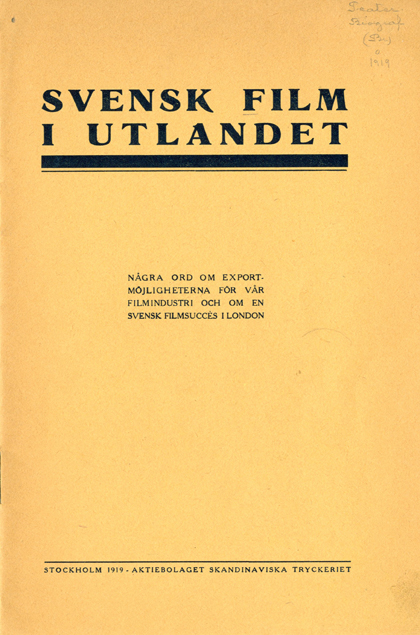
Figure 1. Svensk film i utlandet (Stockholm, 1919).
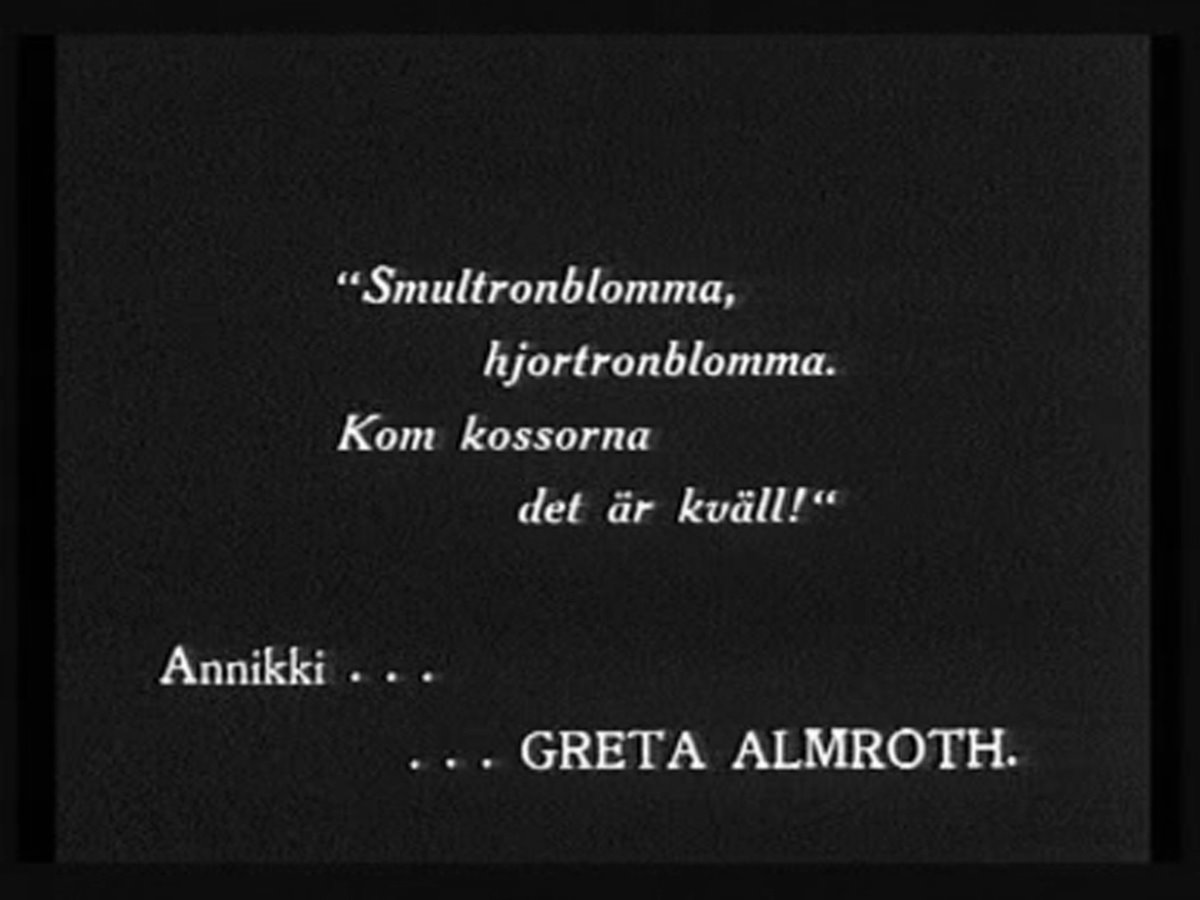
Figure 2. Sången om den eldröda blomman (Sweden 1919, dir. Mauritz Stiller).

Figure 3. Sången om den eldröda blomman (Sweden 1919, dir. Mauritz Stiller).
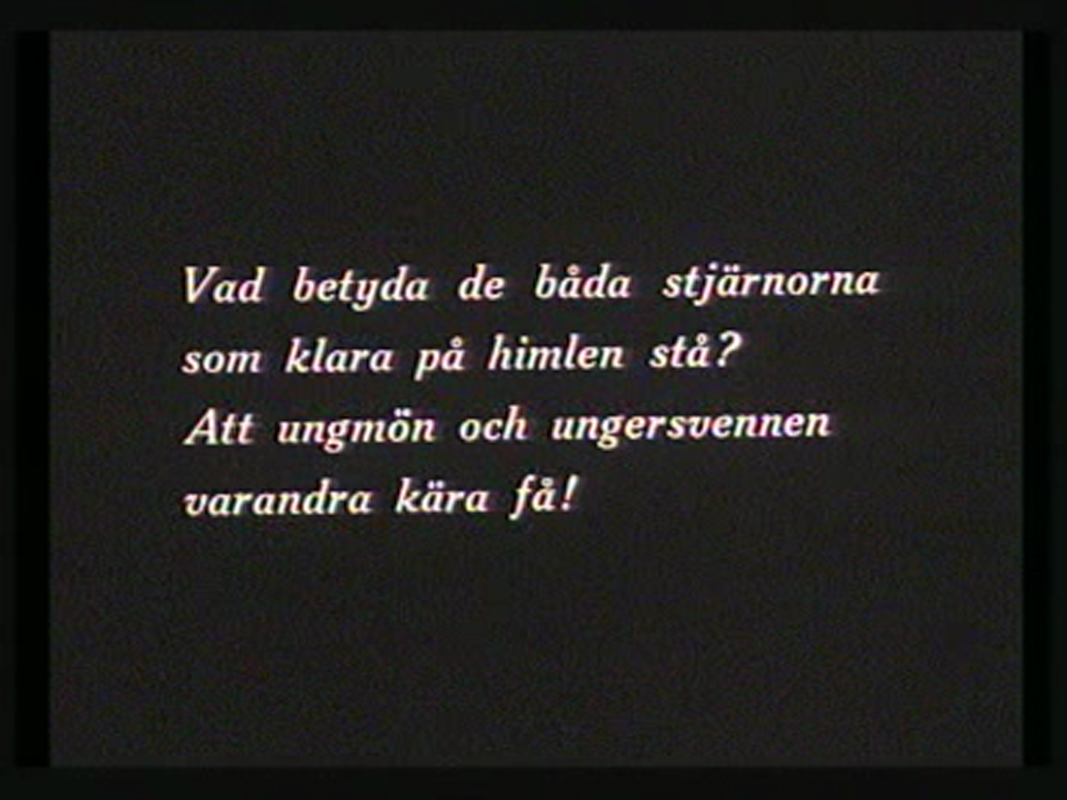
Figure 4. Sången om den eldröda blomman (Sweden 1919, dir. Mauritz Stiller).
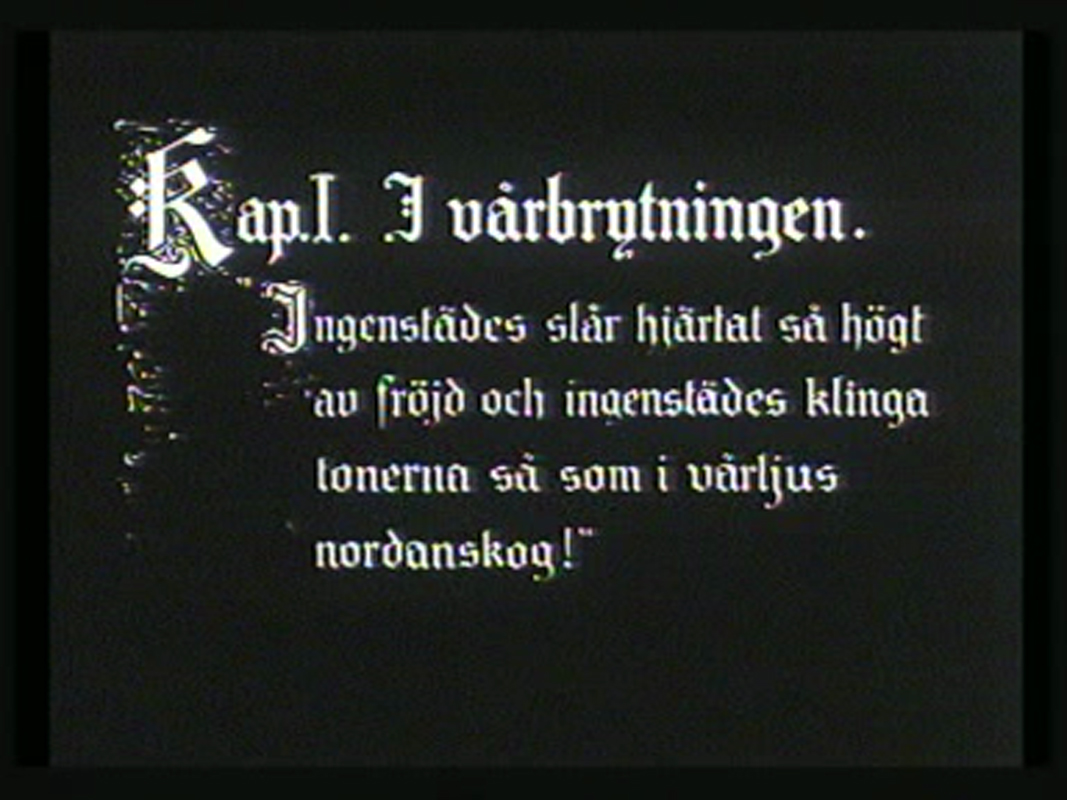
Figure 5. Sången om den eldröda blomman (Sweden 1919, dir. Mauritz Stiller).

Figure 6. Alias Jimmy Valentine (USA 1915, dir. Maurice Tourneur).
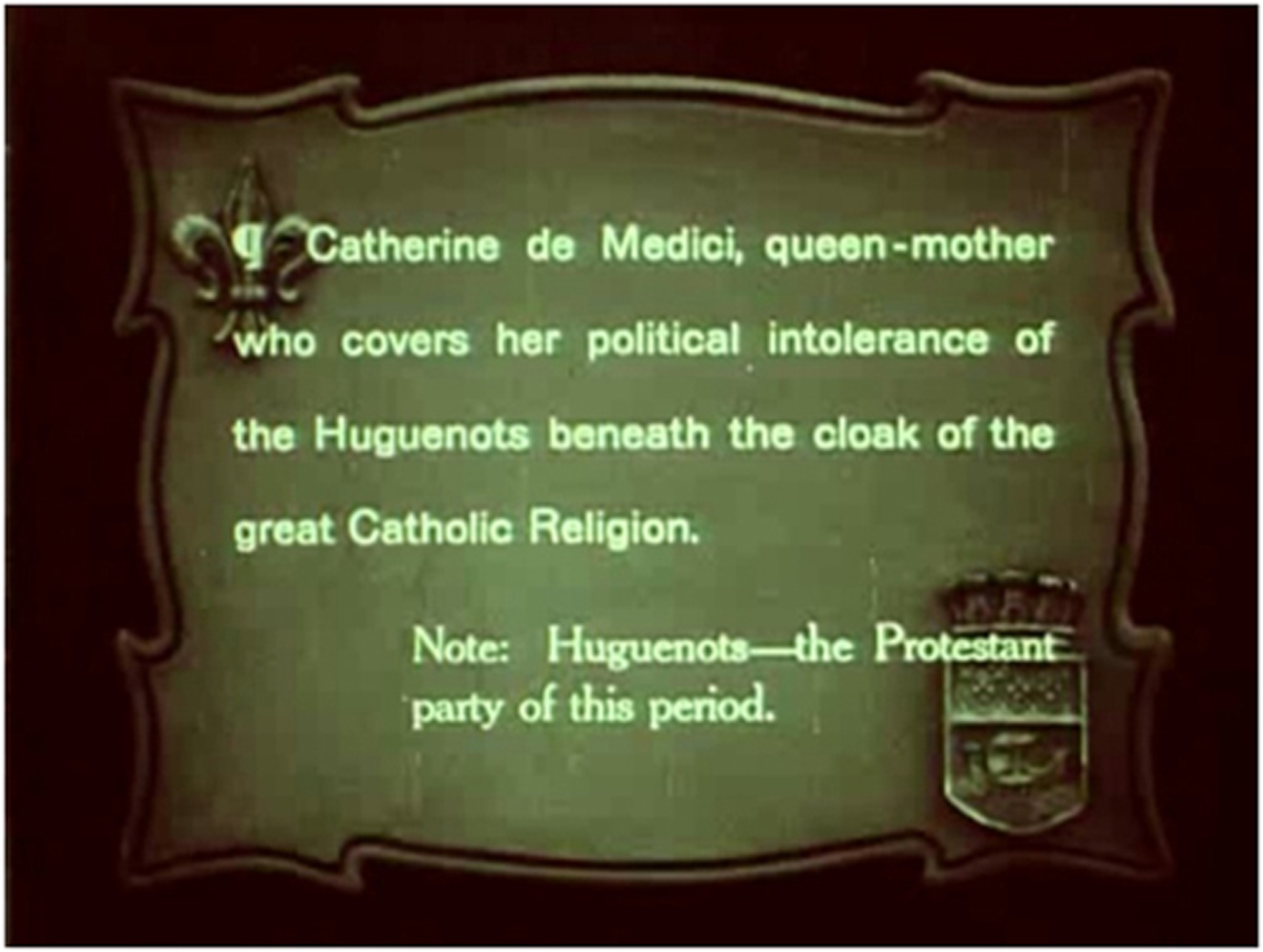
Figure 7. Intolerance (USA 1916, dir. D. W. Griffith).
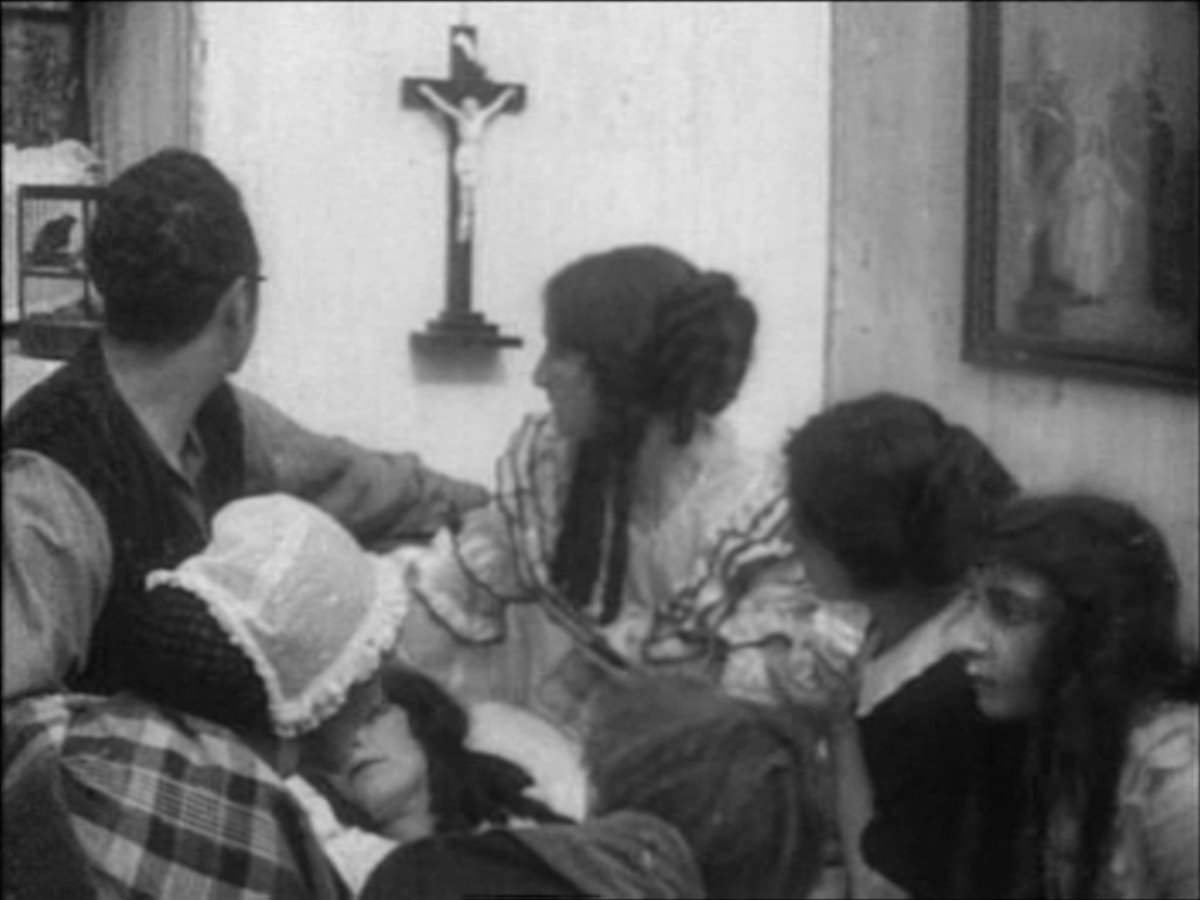
Figure 8.
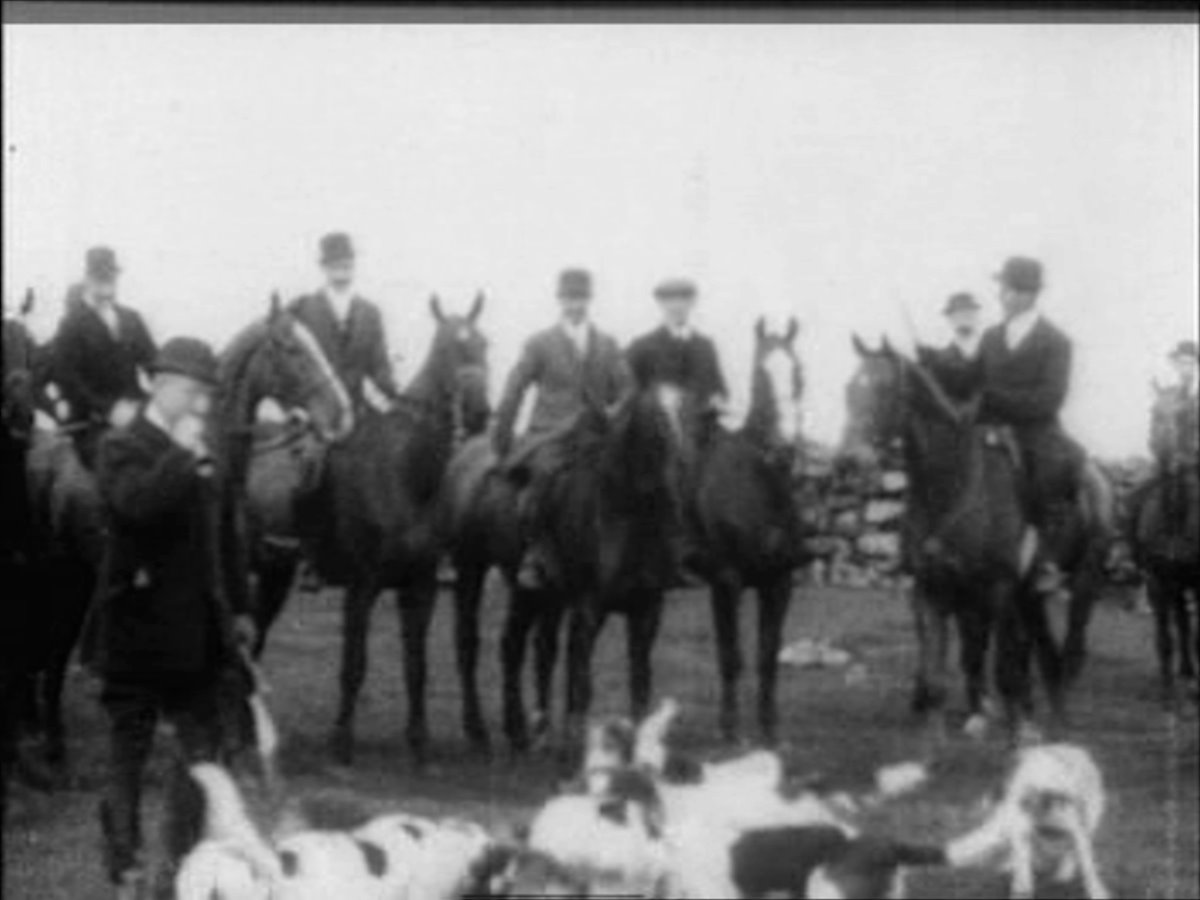
Figure 9.
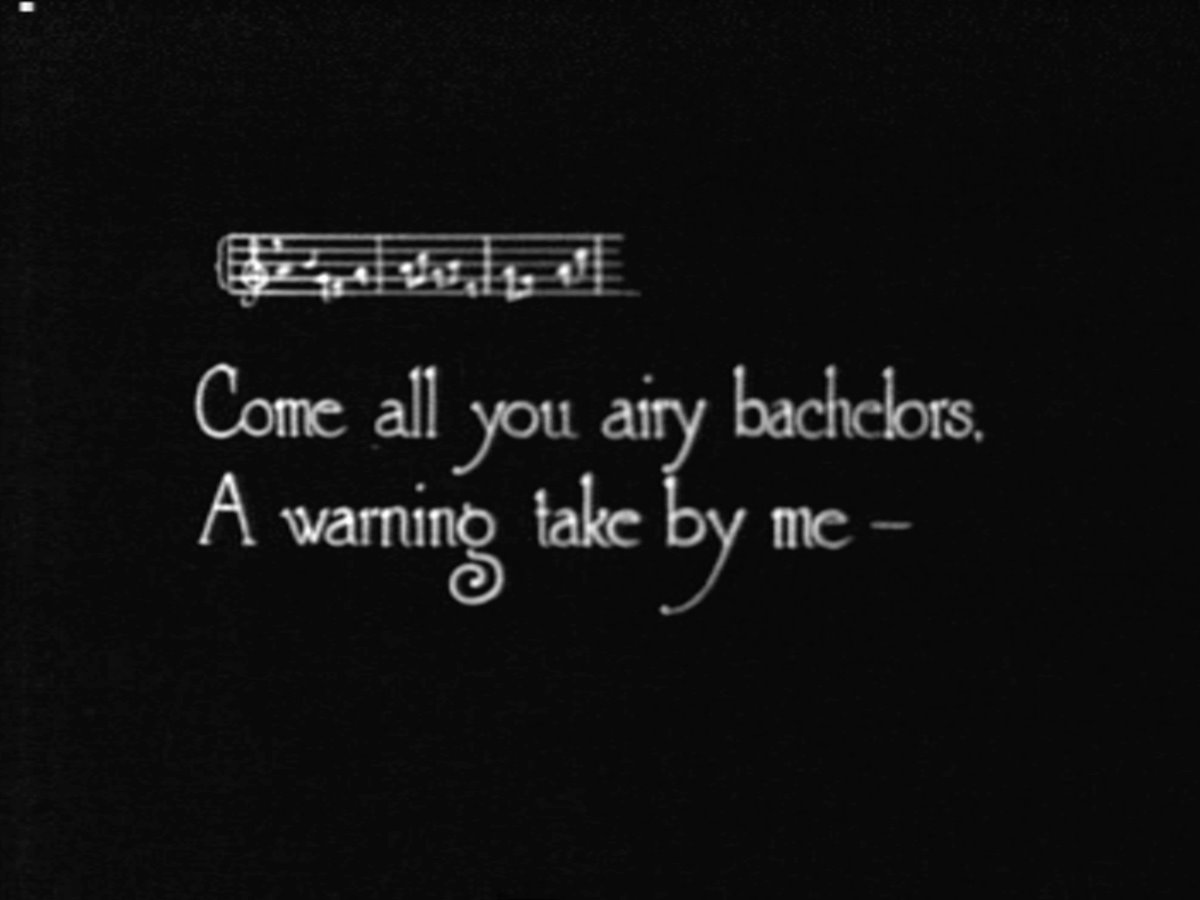
Figure 10.
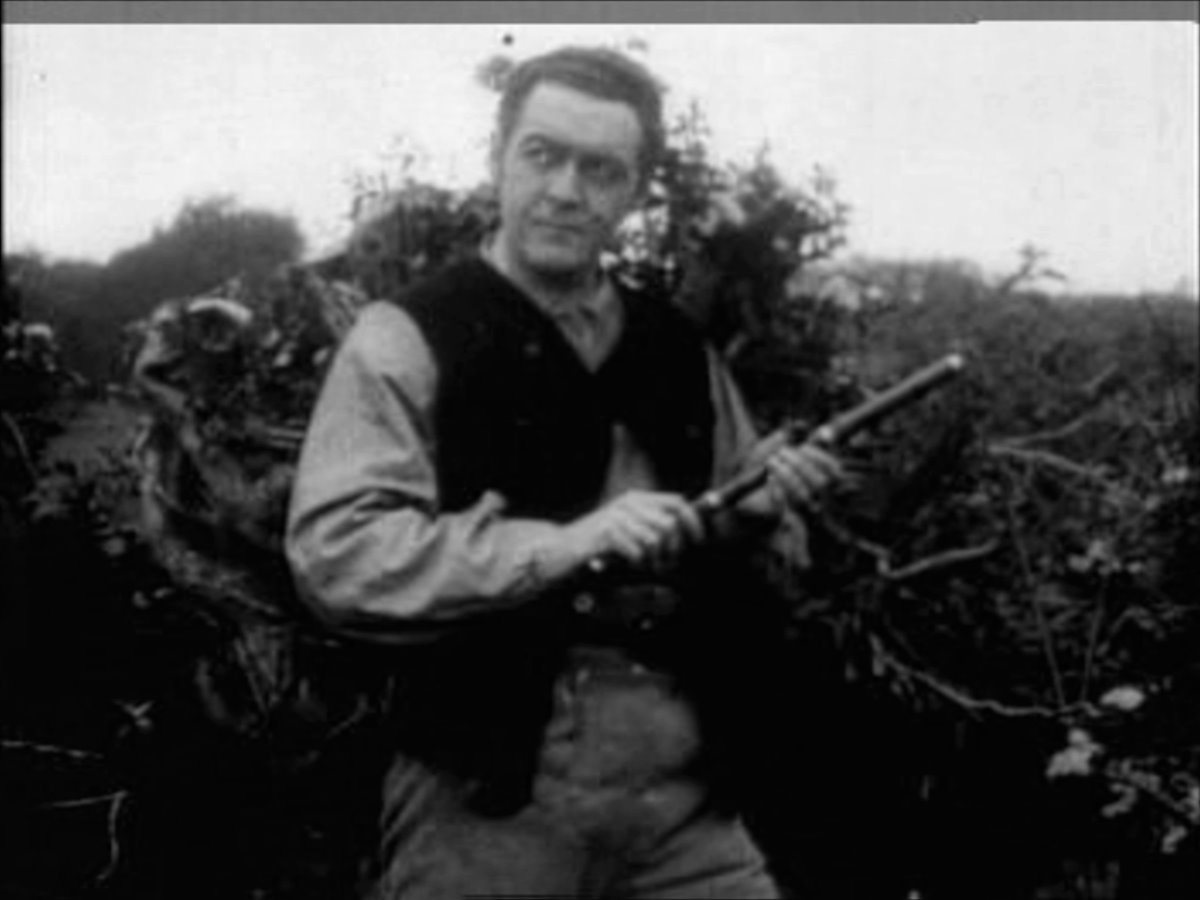
Figure 11.
Works Cited
Adorno, Theodor. 1989. Introduction to the Sociology of Music. New York: Continuum, 1989.
Altman, Rick. 2004. Silent Film Sound. New York: Columbia University Press.
—–. 1996. The Silence of the Silents. Musical Quarterly 80.4 (Winter): 648–718.
—–. 1992. General Introduction: Cinema as Event. In Sound Theory, Sound Practice, ed. Rick Altman, 1–14. New York: Routledge.
Björkin, Mats. 1998. Amerikanism, Bolsjevism och korta kjolar: filmen och dess publik i Sverige under 1920-talet. Stockholm: Aura.
Bull, Sofia. 2010. Artistic Titles in Artistic Films! Investigating Swedish Art-Titles and the Case of Alva Lundin. In Not So Silent: Women in Cinema Before Sound, ed. Sofia Bull and Astrid Söderbergh-Widding, 115–24. Stockholm: Acta Universitatis Stockholmiensis.
Condon, Denis. 2008. Early Irish Cinema 1895–1921. Dublin: Irish Academic Press.
Dagens Nyheter (Stockholm).
Danius, Sara. 2002. The Senses of Modernism: Technology, Perception, and Aesthetics. Ithaca: Cornell University Press.
Duffy, Stephen M. 2009. The Integrity of Ireland: Home Rule, Nationalism, and Partition, 1912–1922. Teaneck: Fairleigh Dickinson University Press.
Flinn, Carol. 1992. Strains of Utopia: Gender, Nostalgia, and Hollywood Film Music. Princeton: Princeton University Press.
Gorbman, Claudia. 1987. Unheard Melodies: Narrative Film Music. Bloomington: Indiana University Press.
Gustafsson, Henrik. 2008. Out of Site: Landscape and Cultural Reflexivity in New Hollywood Cinema, 1969–1974. Saarbrücken: VDM Verlag Dr. Müller.
Irish Independent (Dublin).
Kenneally, Ian. 2008. The Paper Wall: Newspapers and Propaganda in Ireland 1919–1921. Cork: The Collins Press.
Linnankoski, Johannes. 1986. Sången om den eldröda blomman. First published 1906. Stockholm: Alba.
Miller, Kerby A. 1985. Emigrants and Exiles: Ireland and the Irish Exodus to North America. Oxford: Oxford University Press.
Moving Picture World (New York).
Nationalist (Clonmel).
Neubauer, John. 1997. Tales of Hoffman and Others: On Narrativizations of Instrumental Music. In Interart Poetics: Essays on the Interrelations of the Arts and Media, ed. Erik Hedling, Ulla-Britta Lagerroth, and Hans Lund, 117–36. Amsterdam: Rodopi.
New York Tribune.
Quist, Per-Olov. 1995. Folkhemmets bilder: modernisering, motstånd och mentalitet i den svenska 30-talsfilmen. Lund: Arkiv.
Perron, Bernard. 2001. The First Transi-Sounds of Parallel Editing. In The Sounds of Early Cinema, ed. Richard Abel and Rick Altman, 79–86. Bloomington: Indiana University Press.
Salt, Barry. 1992. Film Style and Technology: History and Analysis. London: Starword.
Svensk film i utlandet: några ord om exportmöjligheterna för vår filmindustri och om en svensk filmsuccès i London. 1919. Stockholm: AB Svenska Biografteatern.
Wallengren, Ann-Kristin. 1998.
[1] For detail on musical accompaniment and commentary during screenings of Knocknagow, see the contributions by Gary D. Rhodes and Denis Condon in this issue.
The sun had sunk behind yon hill
Across yon dreary moor,
When wet and cold there came a boy
Up to a farmer’s door.
“Can you tell me,” said he, “if any there be
Who will give me employ(refrain) For to plow and to sow and to reap and to mow
And to be a farmer’s boy, boy,
And to be a farmer’s boy?“My father’s dead and my mother left,
And with three children small;
And what is worse for my mother still,
I’m the oldest of them all.
But as little as I am I will do what I can
All for to seek employ.”“Oh, yes,” cried the wife, “let us try the lad;
Let him no further seek!”
“Oh, yes,” the daughter she replied,
While a tear ran down her cheek,
“It is hard for those who seek for work
And wander for employ.”The boy he stayed till he grew a man
And the good old farmer died.
He left the lad with all he had
And his daughter for his bride.
But the lad that now a farmer is,
He oft times smiles with joy
When he thinks of the day that he came this way
All for to seek employ,For to plow and to sow and to reap and to mow
And to be a farmer’s boy, boy,
And to be a farmer’s boy.
[3] “The Airy Bachelor” (trad.):
Come all you airy bachelors, a warning take by me,
Give over your night’s rambling and shun bad company;
I lived as happy as a prince whilst I lived in the North;
But the first of my misfortune was to ’list in the Light Horse.
It been on a certain Thursday to Galway I did go,
I met with a small officer which proves my overthrow;
I met with Sergeant Dickinson in the market just going down;
He says: “Young man, would you enlist and be a Light Dragoon?”
“Oh, no, kind sir, a soldier’s coat with me would not agree,
Nor neither will I bind myself up from my liberty;
I live as happy as a prince, my mind does tell me so;
Good evening, sir, I’m just going down my shuttle for to throw.”
It’s, “Are you in a hurry, or are you going away?
O won’t you stop and listen to those words I’m going to say?”
It’s, “Do you live far off this place?—the same I want to know;
Your name, kind sir, if you be pleased tell me before I go.”
O, it’s, “I’m in a hurry, my dwelling lies far off,
My house and habitation lies six miles below Armagh;
It’s Charles Higgins is my name, from Carlow Town I came;
I ne’er intend to do the crime, I should deny my name.”
He says, “Now Cousin, Charley, perhaps you might do worse
To bid farewell to your country boys, and ’list in the Light Horse”;
With all kinds of persuasion with him I did agree,
I bid farewell to my comrade boys and fight for liberty.
Farewell unto my father; likewise my sisters three,
And likewise to my mother—her kind face I ne’er will see.
As I’ll ride down through Carlow Town, they’ll all run in my mind,
And thrice farewell to my comrade boys, and the girls I left behind.
